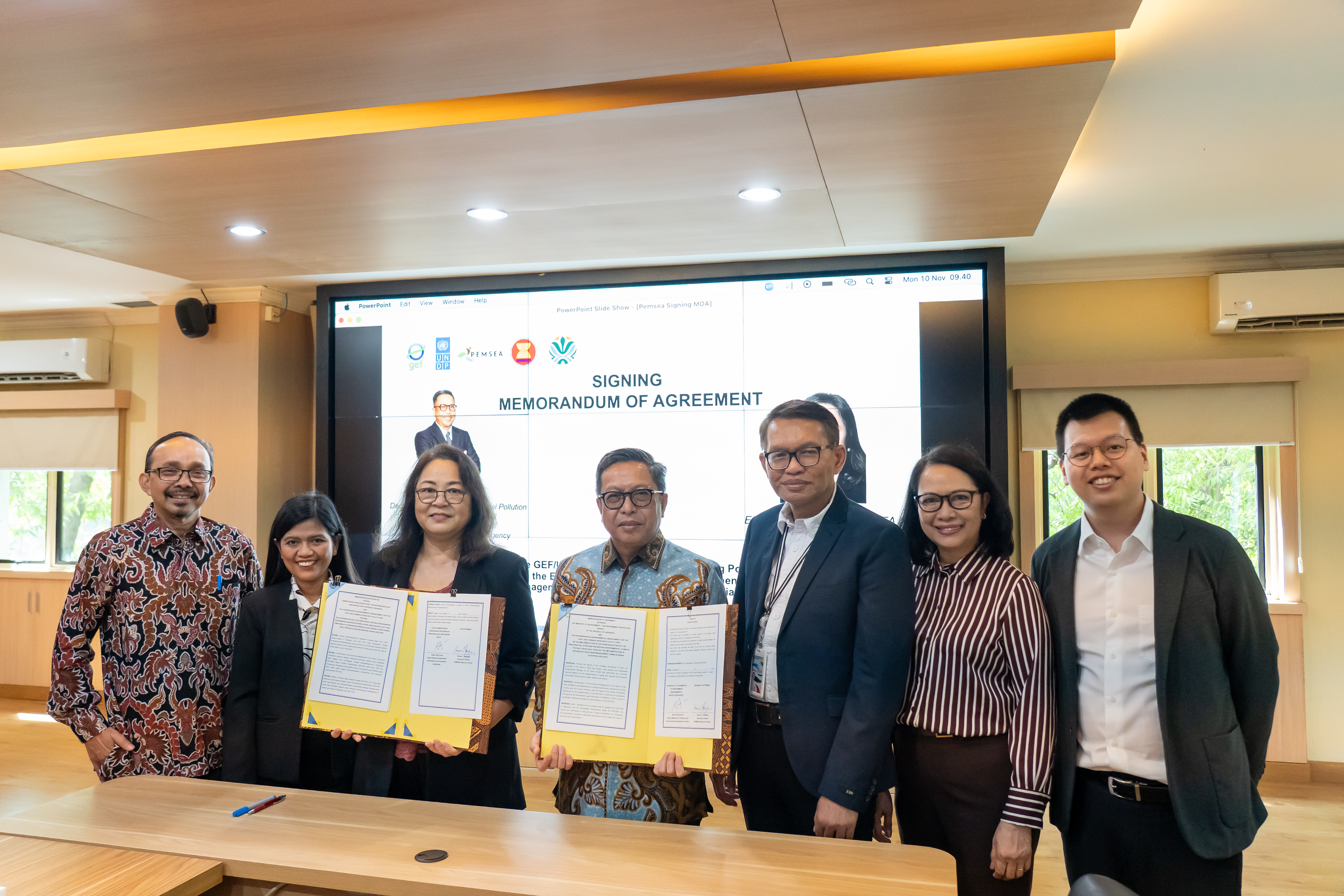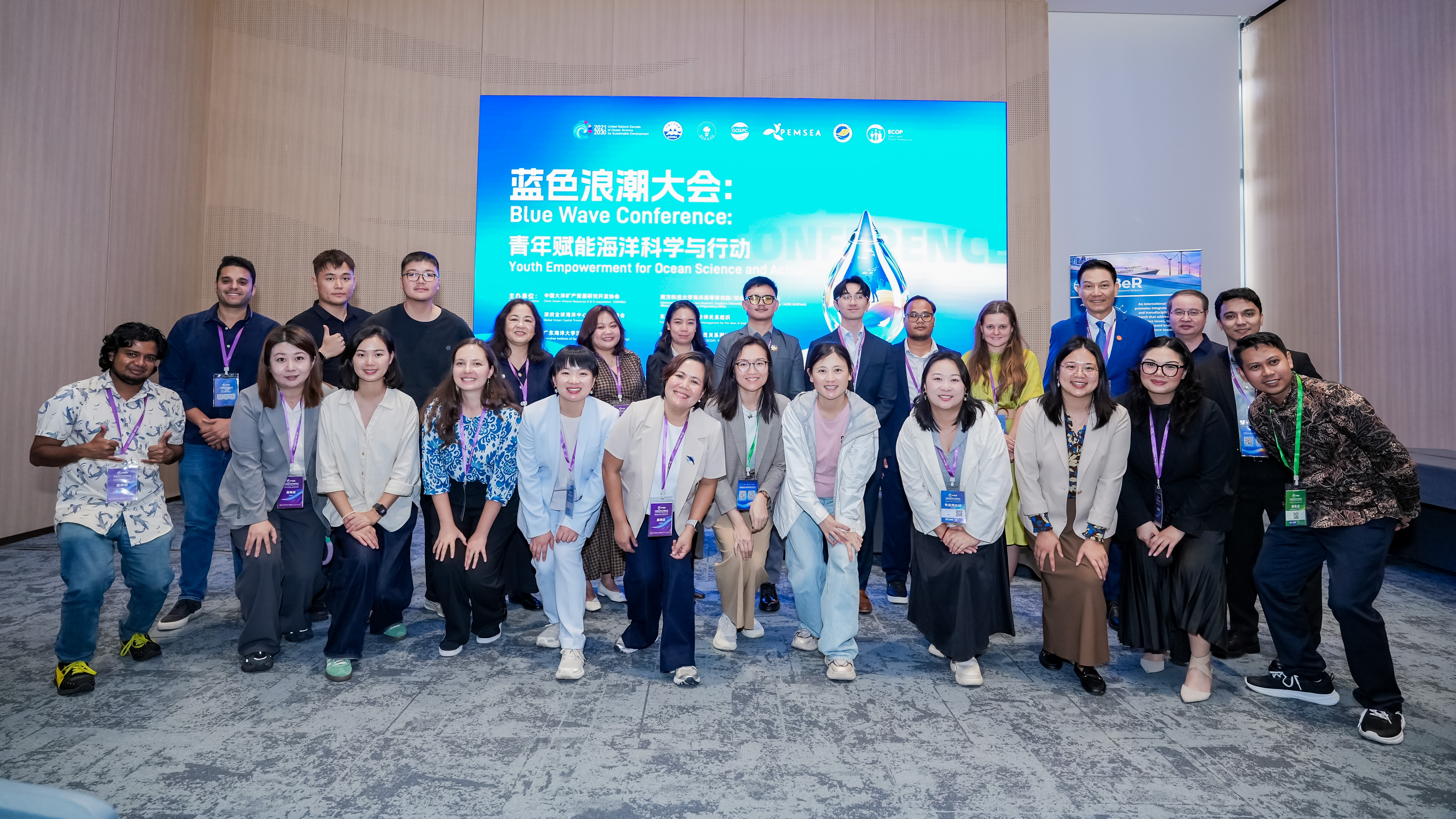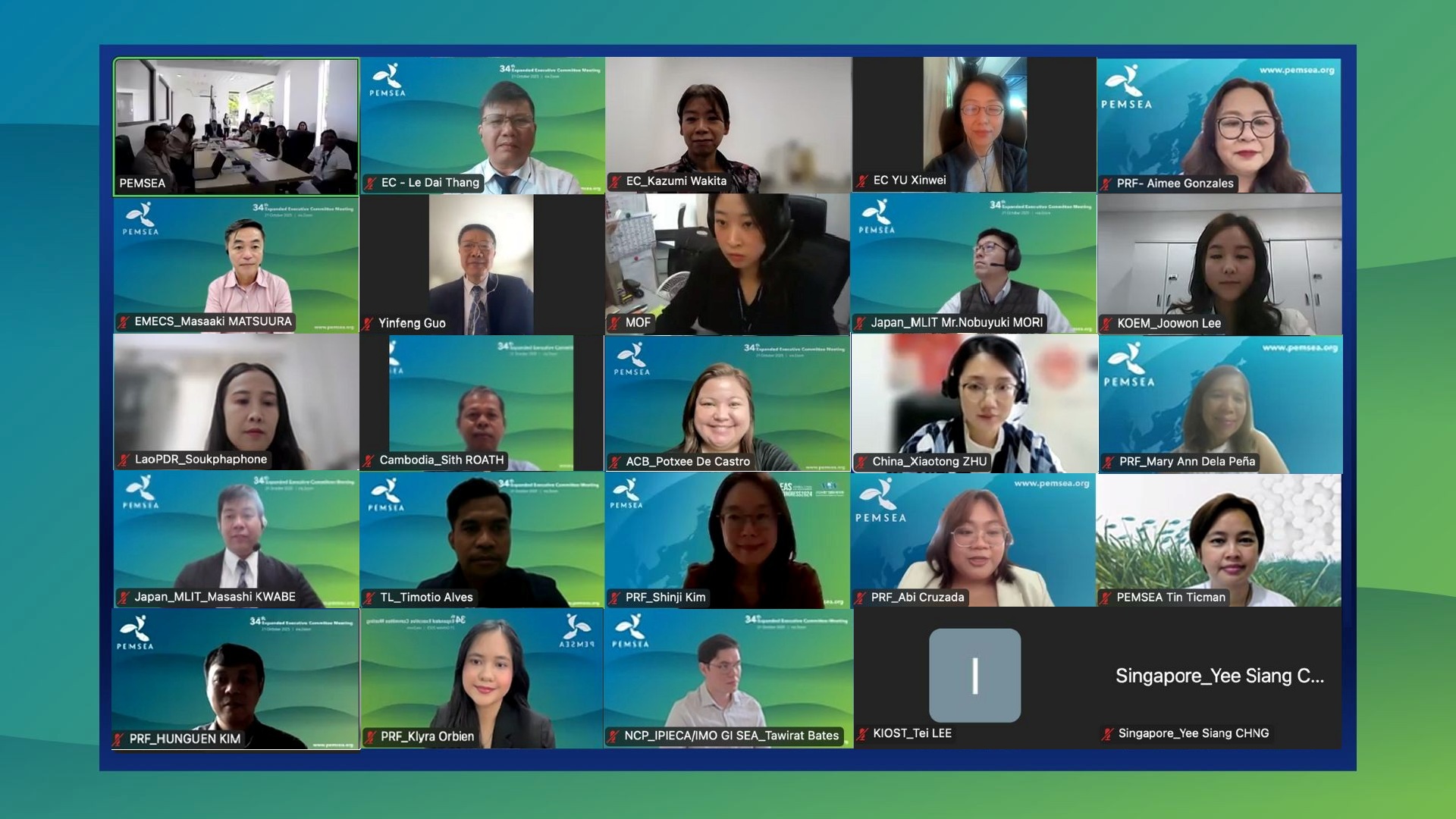On Progress and Challenges: Regional Training Aims to Enhance Blue Carbon Knowledge and Inform Strategies in the East Asian Seas
Wednesday, 16 April 2025

Photo Credit: Burapha University
As part of a holistic response to the worsening climate change crisis, the East Asian Seas region is working on nature based solutions from mangroves, seagrasses, tidal marshes, and seagrass beds, or ‘blue carbon ecosystems’ (BCEs) for carbon sequestration and coastal resilience.
The recent regional workshop in Chonburi, Thailand, organized by the PEMSEA Network of Learning Centers (PNLC), co-sponsored by Burapha University and the University of Hawai’i, brought together experts, trainers, and early to mid- career professionals from nine countries to assess the status of BCE inventories, evaluate carbon stock protocols, and identify capacity-building needs in the region.
The workshop, "Training on Integrating Blue Carbon into the Integrated Coastal Management (ICM) Framework," highlighted the urgency for standardized methodologies, more comprehensive and accessible funding mechanisms, capacity building and strengthened regional collaboration to safeguard these ecosystems, which store up to five times more carbon per hectare than terrestrial forests.
Climate Crisis at Coastlines
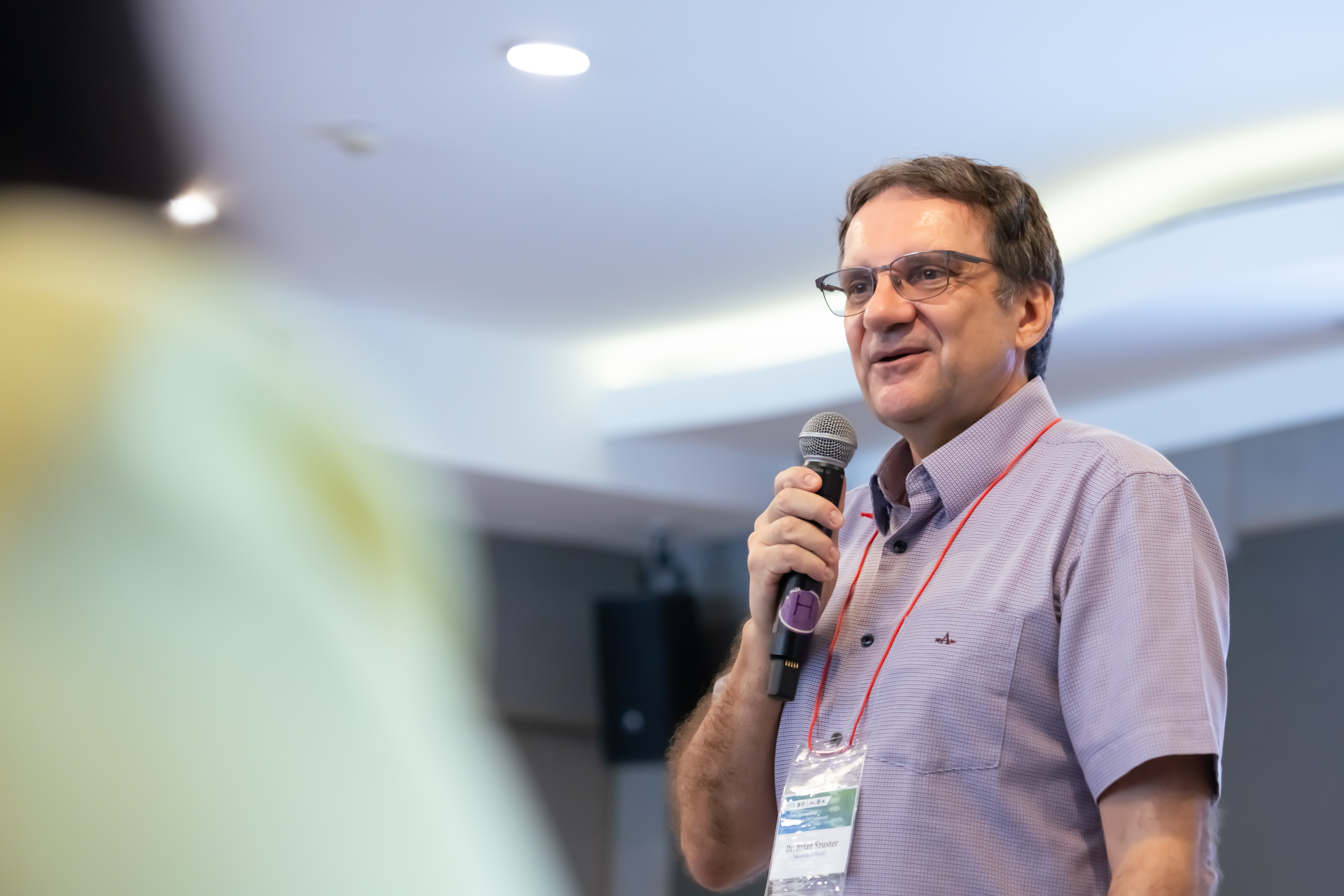
Dr. Brian Szuster | Photo credit: Burapha University
Dr. Brian Szuster from the University of Hawai'i at Manoa warned participants that global sea levels have risen by 23 centimeters since the late 19th century, with oceans absorbing over 90% of excess heat emissions. According to Dr. Szuster, climate change is threatening coastal regions worldwide, with consequences including coral bleaching, ocean acidification, and potentially complete coral reef destruction by the end of the century.
These impacts extend far beyond ecosystem health. Approximately 10% of the global population lives within five kilometers of coastlines, relying on marine resources and ecosystem services for nutrition and food security, livelihoods and economic stability, and natural protection from storms. Southeast Asia, with its numerous coastal megacities, faces particular vulnerability.
Blue carbon ecosystems including mangroves, seagrasses, and tidal marshes sequester carbon at rates up to five times higher than terrestrial forests, yet they continue to disappear at alarming rates globally.
Regional Action Through ICM
In the East Asian Seas region, which houses approximately 31% of the world's mangroves and 33% of coral reefs, implementing effective coastal management frameworks is critical. The workshop highlighted successful examples of Integrated Coastal Management (ICM) implementation from Indonesia, where cities like Bontang and Tangerang have achieved measurable environmental and economic improvements.
The Indonesian case studies demonstrated how localized approaches could successfully balance ecosystem preservation with economic development. In Bontang City, marine protected areas were established with distinct zoning for core protection (12.68%), sustainable fisheries (63.57%), and limited-use tourism (22.75%). Tangerang Regency implemented a comprehensive coastal community development program that significantly expanded mangrove coverage between 2014 to 2023.
"Ensuring political commitment to ICM implementation is imperative to ensure its sustainability. There is a need to constantly coordinate and showcase ICM impacts at the local level to gain confidence from local governments," said Dr. Yonvitner, President of the PNLC.
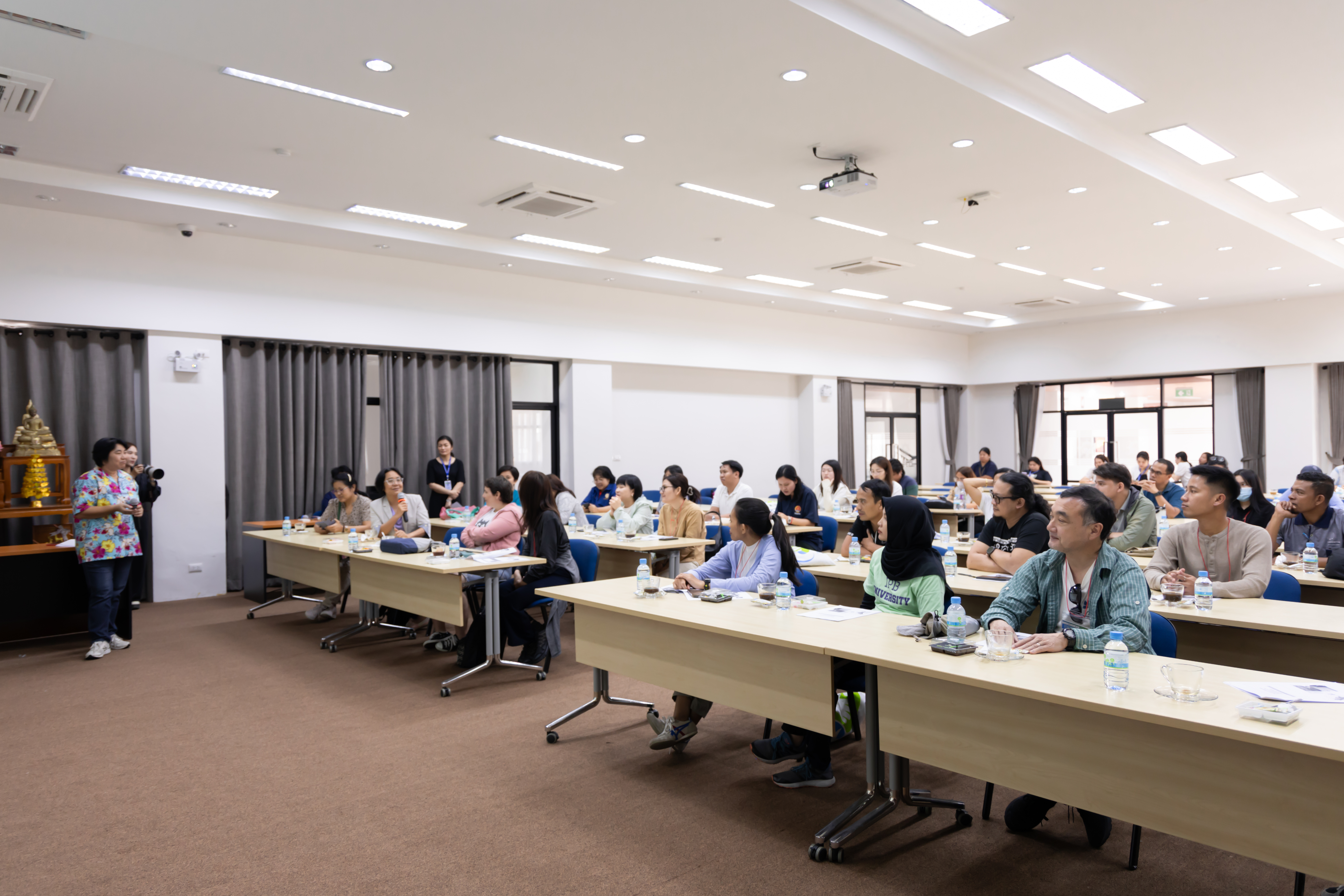
Photo credit: Burapha University
While BCEs are increasingly recognized for their climate mitigation potential, their documentation remains uneven across the region. Experts noted that countries like Indonesia, Thailand, and the Philippines have made advances in mapping mangroves and seagrasses, but comprehensive inventories for seagrasses, tidal flats and seaweed beds are still lacking.
A key challenge is the absence of standardized protocols for measuring carbon stocks. Participants called for regional harmonization of methodologies to ensure comparability and improve carbon credit verification.
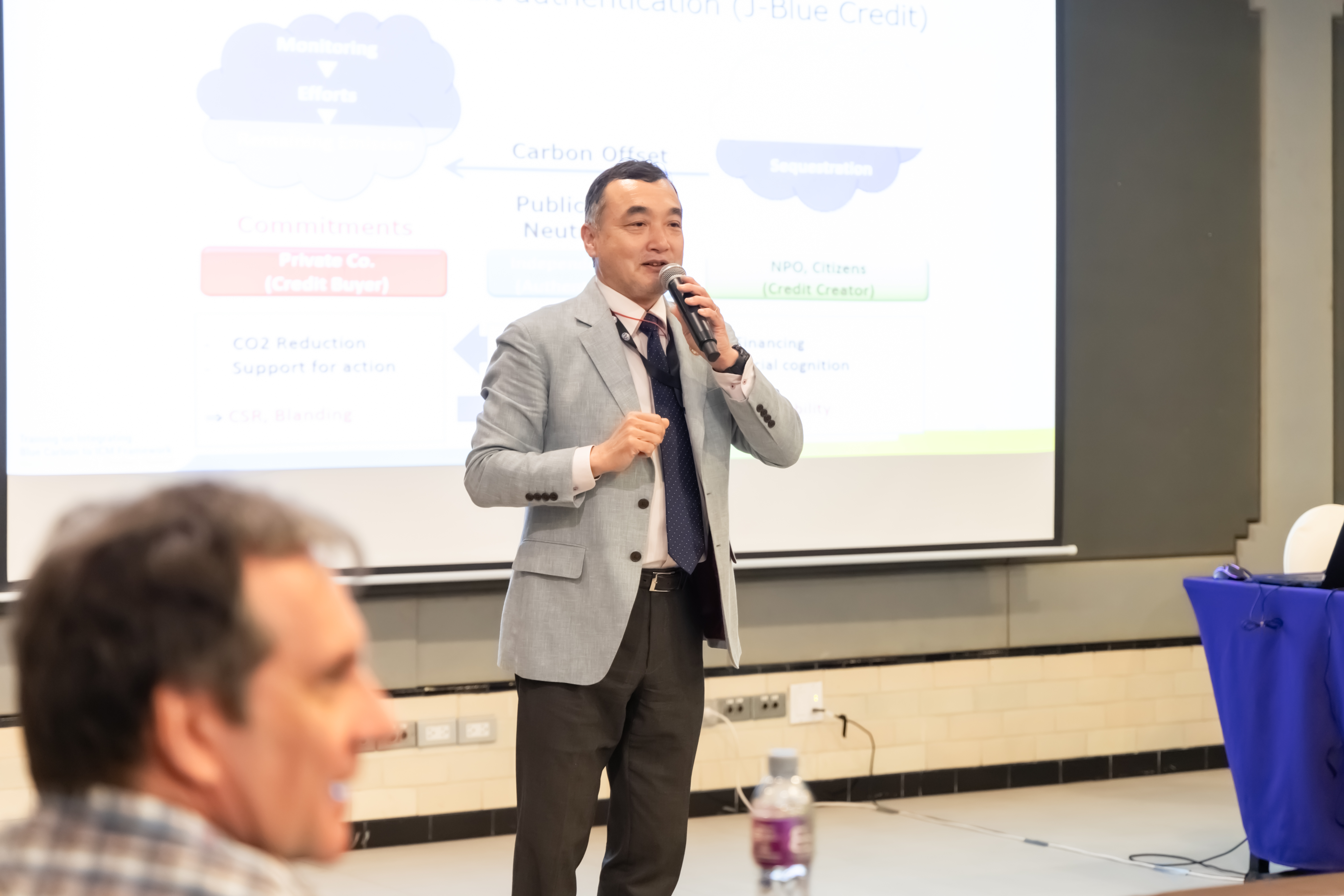
Dr. Keita Furukawa | Photo credit: Burapha University
Dr. Keita Furukawa emphasized that blue carbon ecosystems serve as frontline defenses for coastal communities, where community-based management has proven critical. Case studies from across the region demonstrated how locally led restoration of mangroves and seagrasses not only enhanced carbon storage but also reduced erosion and supported fisheries.
He cautioned, however, that poorly planned coastal development could undermine these gains, such as infrastructure projects which alter tidal flows, increase sedimentation and in turn, smother seagrass beds.
With regard to climate adaptation, Dr. Furukawa stressed that BCEs must be integrated into national adaptation strategies to address sea-level rise, changing precipitation patterns, and increased storm disturbances.
Dr. Furukawa’s sessions on blue carbon valuation and the JBlue credit system drew particular interest from participants. He presented Japan’s approach to monetizing ecosystem services through the “Japan Blue Economy” (JBlue) framework, which aims to channel private investment into coastal conservation efforts. “The economic valuation of blue carbon ecosystems goes far beyond their carbon sequestration value,” Dr. Furukawa explained.
“When we account for coastal protection, fisheries support, biodiversity, and tourism benefits, the true value of these ecosystems becomes compelling for both public and private investment,” he added.
His presentation detailed how blue carbon credit systems can create marketplace opportunities that connect coastal communities with corporations seeking to invest in nature-based solutions. Dr. Furukawa shared insights from Japan’s experience in developing methodologies for blue carbon accounting and creating mechanisms that enable the private sector to support conservation while meeting sustainability goals.
Workshop participants engaged in robust discussions about adapting similar approaches to their respective countries, with particular focus on overcoming regulatory barriers and ensuring equitable benefit-sharing with local communities.
Financing the Blue Future
With the ocean economy projected to reach USD 3 trillion by 2035, innovative financing mechanisms like blue bonds and loans are gaining traction but need substantial scaling up. The World Bank is supporting the government of Thailand to launch a sovereign blue bond to strengthen its blue economy, representing one of several emerging financing solutions in the region.
Despite its economic importance with ocean-related activities in Thailand's coastal provinces contributing nearly 30% of the country's GDP, funding for marine and coastal resource management continues to decline. Climate projections indicate that by 2050, numerous coastal regions across Southeast Asia will face inundation from sea-level rise, with estimated economic losses in Indonesia alone potentially reaching trillions of rupiah.
"The private sector plays a significant role in the recovery of the blue economy while enabling industries to generate new investments. Momentum is building for innovative blue finance, among investors, financial institutions, and issuers globally," said Ms. Waraporn Hirunwatsiri, Senior Environmental Specialist at the World Bank.
Despite their value, blue carbon initiatives remain severely underfunded. Between 2009 and 2019, philanthropic funding for blue carbon projects constituted just 0.34% of total ocean conservation grants. Current investment represents approximately 1% of what experts estimate is needed to fully restore these vital ecosystems worldwide.
Call to Action
The workshop yielded several outcomes that will shape regional approaches to the management and conservation of blue carbon ecosystems across the region. Group discussions effectively identified the current status, knowledge gaps, and opportunities within blue carbon science across the region and created the basis for identifying concrete next steps to develop action plans for PNLC members to further support blue carbon initiatives at the local level.
The workshop featured poster presentations of various academe-led blue carbon initiatives and studies from throughout the region. These covered diverse aspects of blue carbon research including carbon stock accounting, policy development approaches, citizen science programs, and monitoring methodologies for blue carbon ecosystems.
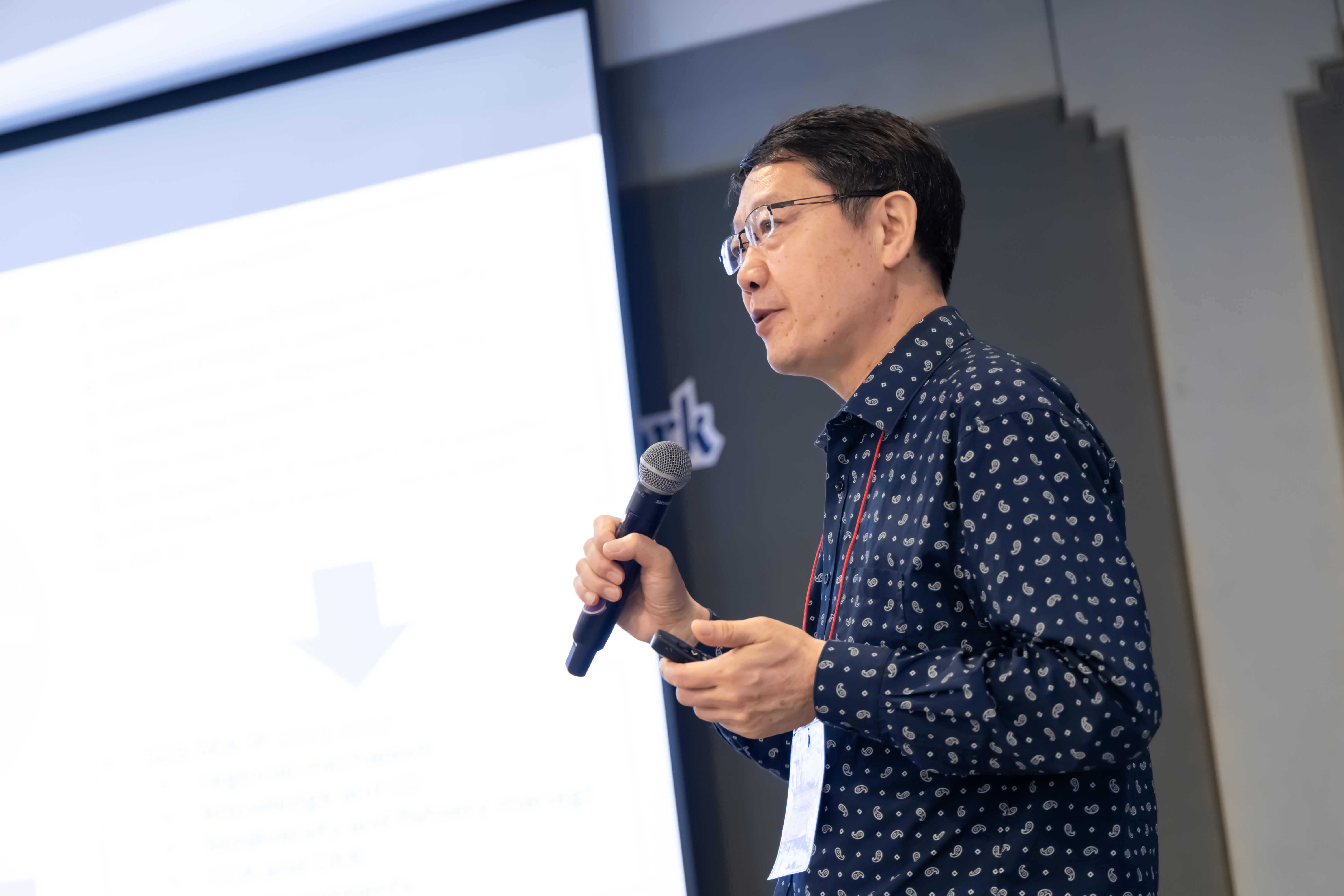
Mr. Yinfeng Guo | Photo Credits: Burapha University
In a discussion led by Mr. Yinfeng Guo, he focused on establishing enabling policy and legal frameworks for blue carbon ecosystems in the region and explored international commitments and frameworks relevant to blue carbon ecosystems. He examined how blue carbon ecosystem initiatives and other ocean-based solutions are integrated within the Sustainable Development Strategy for the Seas of East Asia (SDS-SEA).
The session revealed that while numerous enabling policy and legal frameworks exist at international and regional levels supporting the conservation and restoration of blue carbon ecosystems, integration of blue carbon and nature-based solutions at the national level exists but remains incomplete across many countries.
The workshop concluded with a call on how the PEMSEA Network of Learning Centers can support regional blue carbon programs and emphasized the need for better policy integration, stronger local governance capabilities, and innovative financing mechanisms to protect these vital ecosystems.
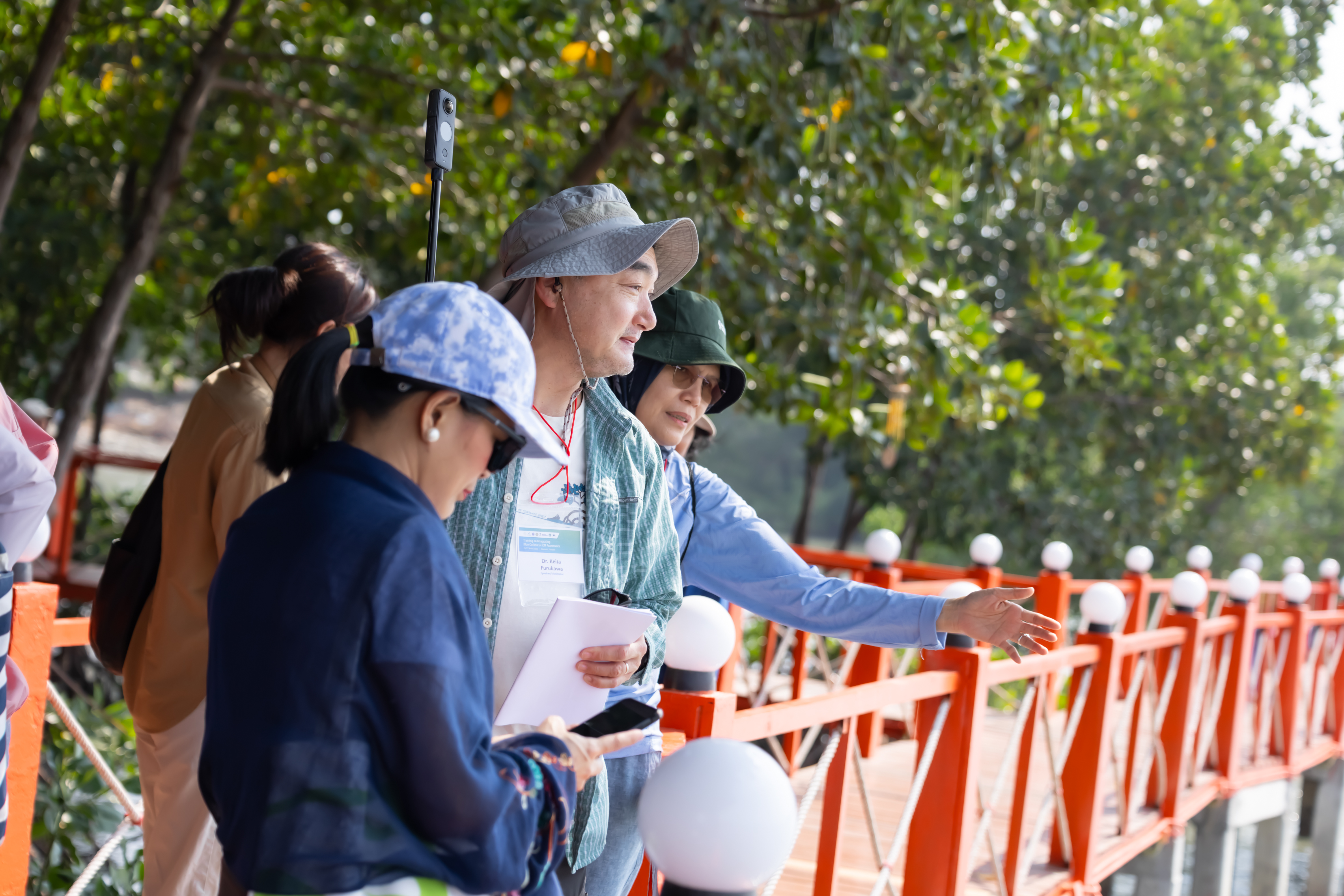
Participants experience an enriching field visit to the Saensuk Municipality and local mangrove area, where they immerse themselves in sustainable coastal ecosystems and learn conservation efforts. Photo credit: Burapha University
As the East and Southeast Asian seas are currently updating their climate commitments ahead of the 2025 UN deadline to report on national climate plans, integrating blue carbon ecosystems in climate strategies has never been more urgent not just for environmental protection but for securing coastal communities’ livelihoods and economies against growing climate threats.

